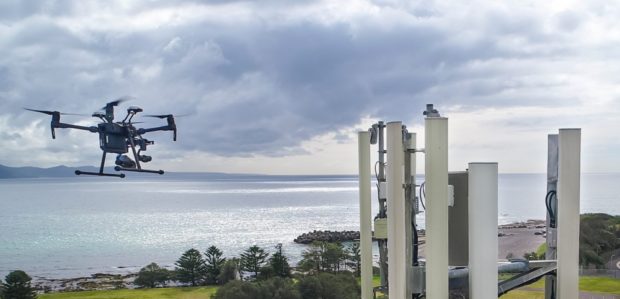The use of drones for asset management across different industries has rapidly increased. It has changed the way assets have been inspected for decades, which has clearly impacted how we manage assets in a variety of businesses. But has this change impacted the business landscape positively? Has the use of drones in commercial spaces improved the quality of data collected? Has it led to cost and time benefits? The answer is yes!
Read this article to understand why drones are the future of asset inspection.
- Improved Graphics and Videos
Drones can fly to high altitudes and provide visual inspection opportunities when traditional and conventional techniques fail. They provide visual information through captured videos and photos that your team can use to integrate construction survey plans, which then helps in creating realistic data.
Moreover, data like aerial photos and videos of the site and its progress highly interest clients since it gives them a clear picture of the project. And this can work wonders for construction marketing projects.
- Cost-Effectiveness
When asset inspection is done in a traditional way, businesses incur the costs of deploying a human team, training personnel, protecting liability, and insurance. But with drone asset inspection, you can save on all these costs. Moreover, traditional inspections can result in errors since even the most skilled teams are capable of human mistakes, which can increase the cost further. This problem is eliminated by drone inspection.
Drone equipment, license, and services are also more affordable compared to traditional methods of inspection
- Work Safety
You can ensure work safety by conducting asset inspections remotely using drones. Drones thoroughly inspect sites for details, for example, the condition of the protective paint and the paint’s chemical composition. This makes the inspection completely safe since your workers would be remotely inspecting the site. Moreover, when it comes to tower inspection, drones allow teams to work safely on the ground, eliminating the risks of trips, falls, and slips. The use of Unmanned Aerial Systems also makes anticipating unstable structures, shallow excavations, and worker safety easier.
- Time-Saving
The time taken reduces by 8-10 times when asset inspection is done using drones. Therefore, drones are great for time-critical inspections where you may need to inspect more assets more frequently. For example, an engineer who evaluates 10 miles of train tracks manually every day can be replaced by a drone that can cover a larger area in lesser time.
You can also have a real-time preview of the construction site during inspection without having to wait for your teams to generate actionable data. These efforts collectively can help in reducing the time taken to complete inspection projects.
- Better Data Collection
Human teams cannot possibly replicate the several advanced features offered by drones, such as mapping, high-resolution imaging, 3D modeling, 4k video, etc. Moreover, multispectral sensors help look for defects, faults, or flaws that may not be captured by humans.
Advanced drones also use the LiDAR technology that works by transmitting a laser beam to measure reflection. This enables businesses to navigate complex topology easily and more effectively.
In addition to these benefits, drones offer the benefit of improved visualization. For example, a developer can visually demonstrate how the project would look like using the overhead view captured by a drone. And the accuracy of drone-generated data can be remarkable.
So, find out where you can use drone technology in your business to reduce efforts and improve output. A consolidated list of requirements will help you find the right equipment or service provider.

